-
Numero contenuti pubblicati
50011 -
Iscritto il
-
Giorni Massima Popolarità
35
Tipo di contenuto
Forum
Galleria
Calendario
Download
Articoli del sito
Store
Blog
Risposte pubblicato da J-Gian
-
-
On 6/9/2023 at 09:23, j scrive:

Poco fa sono incappato per sbaglio nel video di presentazione (non sarà facile digerire la cena... 😬): solo ora ho realizzato che la piattaforma è a motore trasversale 😅
-
E' un bel macchinone, nel tempo capiremo se sanno fare anche macchine durature ed a garantire l'assistenza del caso.
-
 1
1
-
-
-
5 ore fa, RayLaMontagna scrive:
Detto ciò...Lexus ha sviluppato anche un sistema FullHybrid con cambio a convertitore di coppia 6marce. RX lo monta, ad esempio (peccato per il costo
 )
)
Meglio ancora, in quanto pur essendo una trasmissione a treni d'epicicloidali, non ha nemmeno il convertitore, ma delle frizioni, come va di moda su certi sistemi ibridi

-
10 minuti fa, alfagtv scrive:
No non lo uso,non vado mai in montagna con la Toyota,in che senso pericoloso?
Quindi se scendessi d estate dallo Stelvio che problemi ci potrebbero essere,la ventola non ha diverse velocita' in base a quanto la batteria e' calda?
Sì, ti si accende sicuramente la ventola, ma non so come e quando

Max cita il caso dell'Auris, dove la ventilazione della batteria è a tutti gli effetti un po' carente, soprattutto nella gestione (dovrebbe accendersi prima ed a velocità più alte).
Quanto a Corolla, non so se sia uguale, o se abbiano migliorato la gestione... Vorrei sperare di sì, ma non ho testimonianze in merito, magari @Maxwell61 ne sa di più.
-
 1
1
-
-
-
Non ho le competenze per capire se sia fuffa o meno... Panasonic è un'azienda seria, ma siamo nell'era del chimichese e del fuffesimo, in cui puoi vendere un prodotto che "forse fa qualcosa di utile", se contestualizzato in improbabili circostanze... 🤔
-
-
21 ore fa, xtom scrive:
oppure €19.950 solo con finanziamento Contributo Prezzo di Stellantis Financial Services in caso di rottamazione di un veicolo omologato EURO 0, 1, 2, 3.
Mi sono un attimo perso la cosa: qualcuno, per caso, ha fatto il calcolo di cosa verrebbe a costare complessivamente, con questo vincolo?
-
1 minuto fa, savio.79 scrive:
Ho sentito dire in un video che per migliorare la silenziosità, oltre alle modifiche al motore termico, ci sono parabrezza e finestrini anteriori insonorizzanti.
Chiedo agli esperti di questi dettagli, perché io non me ne intendo: capita anche in altre vetture di pari categoria?
Sì, di solito sono i vetri stratificati, li hanno diverse auto. Ovviamente non su tutte sono della stessa qualità ed efficacia.
-
 1
1
-
-
13 minuti fa, RayLaMontagna scrive:
Non servono praticamente a una mazza col CVT.
Se metti il cambio in modalità S puoi utilizzarle, ma di base abbassano leggermente i giri motore, nulla di più.
Secondo me, visto che è così, dovrebbero almeno fornire un effetto più consistente...il resto lo farebbe poi la sensibilità del pilota nel gestire il pedale del gas.Ho ritirato la mia NX settimana scorsa (finalmente, dopo 18 mesi di attesa) e per adesso non sento proprio la necessità di utilizzare le palette.
Se non hai una modalità "B" sul selettore di marcia, probabilmente le palette potrebbero tornarti comode in discesa, per avere più freno motore, come sui 2.0 Toyota
-
 1
1
-
-
8 ore fa, MotorPassion scrive:
Air quality protection with nanoe-X™
The new Corolla’s air conditioning system does more to promote the well-being of everyone on board with the introduction of nanoe-X™ air purification technology.
Developed by Panasonic and featured for the first time in a Toyota model in Europe, this feeds trillions of nano-sized, atomised water particles into the ventilation airflow. These hydroxyl radicals have been proven in independent laboratory testing* to have wide-ranging beneficial effects when used in enclosed spaces. Inside vehicles such as the new Corolla, these can include: -
- Inhibiting the activity of airborne bacteria and viruses
- Helping prevent the spread of mould
- Inhibiting pollen and other allergens, such as those linked to pets
- Breaking down hazardous substances found in particulates (PM2.5)
- Eliminating common, unpleasant odours
Using nanoe-X™ also maintains a good moisture level in the cabin atmosphere, which has a positive effect on human skin and hair.
These benefits can be enjoyed every time the air conditioning system is used but are particularly valuable when driving in urban areas where atmosphere pollution is highest, or when the car is regularly used by different drivers and passengers. The system is provided as standard on the new Corolla, from Mid+ grade.
*Testing programme details available at https://www.panasonic.com/global/hvac/nanoe/all/verification.html
Sarei curioso di capire meglio come funziona, che manutenzione occorra, ecc.
-
Sono curioso di capire che powertrain abbiano utilizzato per elettrificare questo mezzo
-
4 ore fa, led zeppelin scrive:
Come ti è sembrata a livello di abitabilità posteriore e baule?
Secondo me meglio dell'attuale, ma prendi il giudizio con le pinze, perché c'era molta gente che spingeva e ho trascurato un po' i posti dietro e bagagliaio

-
 1
1
-
-
10 ore fa, Giacomino88 scrive:
Col 1.5 potrebbe arrivare anche su jazz?? Magari per un eventuale restyling..
Credo di no, questo powertrain è pensato per i mezzi più grossi, magari un giorno lo vedremo su Civic e ZR-V, ma non è scontato nemmeno questo.
E se capiterà, probabilmente succederà come su Accord, che adotta la 4a Gen, ma senza il "rapportino" per il traino.
-
 1
1
-
-
Riporto anche qui quanto accennato nel topic della nuova CR-V, in merito alla 4a generazione del sistema i-MMD, integrandolo con un comunicato by Honda:
12 ore fa, J-Gian scrive:Una cosa che ci siamo fatti sfuggire, è che questa CR-V 2023, assieme alla nuova Accord 2023, montano la 4a generazione del sistema i-MMD.
Cambia il layout interno, dove motore elettrico e generatore, non sono più coassiali, ed hanno design e caratteristiche un po' diversi (vedi tabella sotto).
Ma la cosa che più salta all'occhio (e pare sia limitata a CR-V, quindi non ad Accord), la presenza di un secondo sistema di lock-up per collegare meccanicamente il motore endotermico alle ruote, con un rapporto di riduzione maggiore. Questa scelta fa sì che la trazione elettrica possa essere bypassata, in alcune circostanze, anche a velocità medio basse, ottimizzando i consumi e soprattutto le capacità di traino, che nel caso della CR-V può arrivare a 750 kg (frenati).
Il secondo sistema di lock-up invece, è ora adatto a funzionare a velocità più elevate, ottimizzando ulteriormente i consumi a quelle velocità (simile ad una 7a marcia).
3rd gen. 4th gen. Internal combustion engine power 107 kW 108.2 kW Internal combustion engine torque 175 Nm 187 Nm Traction motor power 135 kW 135 kW Traction motor torque 315 Nm 335 Nm Maximum electric motor speed 13000 14500 Generator power 106 kW 120 kW Generator torque 85 Nm 68 Nm Maximum generator speed 13000 19000 - The Honda two-motor hybrid system is an innovative solution to the need for low-emissions and high fuel economy that doesn’t compromise packaging or performance
- The Honda two-motor hybrid system made its U.S. debut in the 2014 Accord Hybrid
- The new fourth-generation of the Honda two-motor hybrid system debuted in the all-new 2023 Honda CR-V and shortly thereafter, the all-new 2023 Accord
- Honda has sold about 300,000 cars and SUVs in the U.S. powered by the two-motor hybrid system
A key step in Honda’s electrification strategy, the new fourth-generation of the Honda two-motor hybrid system maximizes efficiency without compromising a vehicle’s dynamic performance or packaging. Delivering a sportier driving experience and improved capability, this latest version of the hybrid system is available in the all-new 2023 Honda CR-V, and now Accord, which will represent about 50% of CR-V and Accord sales annually.
Debuting in the 2014 Accord Hybrid, the Honda two-motor hybrid system has become smaller, lighter, more powerful and more efficient with each generation. It consists of five core components:
- Electric generator motor (functions as an electrical generator supplying power to the hybrid battery)
- Electric propulsion motor (drives the wheels directly)
- Atkinson-cycle gasoline engine (connected to the electric generator/starter motor functions as an electrical generator, supplying power to the hybrid battery and/or the propulsion motor)
- Intelligent Power Unit (IPU) (houses the battery and its controlling hardware)
- Power Control Unit (PCU) (the “brain” of the system controlling all hybrid functions)
See below for more information on these core components.
New Fourth-Generation: 2023 CR-V and Accord
The first three generations of the Honda two-motor hybrid system used two electric motors mounted in-line with each other, with the generator motor connected directly to the engine, and the propulsion motor connected to the drive wheels.The new fourth-generation of the system in the 2023 CR-V and Accord works differently. The two electric motors are now side-by-side, which has multiple benefits.
- This configuration allows for the use of a larger and more powerful propulsion motor, which now has an increased torque output of 247 lb.-ft. (+15 lb.-ft.). It also maintains its 181 hp over a broader range of motor rpm, thereby improving response.
- The new propulsion motor uses new high-performance magnets that, as before, are made without heavy rare-earth metals. Internally, the motor uses a multi-ring structure that helps enable a higher peak motor speed of 14,500 rpm, an improvement of 11.5%. This higher motor speed also contributes to a higher sustained top speed capability for the 2023 CR-V hybrid models (Sport and Sport Touring) of 115 mph, 28% faster than its predecessor.
- The new side-by-side arrangement also enables the use of an additional direct-drive gearset with a new low-speed lockup clutch (deployed in CR-V only) allowing engine drive at urban speeds and supporting the ability for CR-V to tow up to 1,000 pounds, a first for the two-motor hybrid system.
- A high-speed lockup clutch is used in both CR-V and Accord, enabling a more relaxed driving environment at highway speeds by reducing engine rpm while also contributing to the new higher continuous top speeds.

CR-V layout shown above
The IPU and PCU were further optimized for size and efficiency. The IPU houses a 1.06 kWh battery, along with the controlling hardware, in a 24% smaller package that weighs 12% less than its predecessor. This smaller size enables CR-V and Accord hybrid models to have the same cargo space as their non-hybrid counterparts. The PCU located under the hood now features a lower profile than before, creating more room in the engine compartment for better noise management.
The newest version of the two-motor hybrid system also features an all-new 2.0-liter 4-cylinder engine. With the addition of direct multistage fuel injection, the new Atkinson-cycle 2.0-liter DOHC i-VTEC® 4-cylinder increases power to 145 hp (SAE net at 6,100 rpm) and torque to 138 lb.-ft. (SAE net at 4,500 rpm) in CR-V, and 146 hp (SAE net at 6,100 rpm) and 134 lb.-ft. (SAE net at 4,500 rpm) in Accord. The changes also significantly reduce emissions, with nitrogen oxides (NOx) reduced by 22%, and total hydrocarbon (THC) emissions reduced by 24%.
For the first time on CR-V, the two-motor hybrid system is available with front-wheel drive or with Honda’s Real Time AWD with Intelligent Control System™. All Accords are front-wheel drive.
Two-Motor Hybrid System Fundamentals
Drive Force Transfer
Rather than use a torque converter or mechanical pulley or belt, the two-motor hybrid system relies on the interplay of the two motors for driving and generating power. This form of drive force transfer offers smooth and predictable acceleration matched with efficient low-rpm highway cruising when the gasoline engine is in operation.Under most circumstances, the gasoline engine connected to the generator produces electricity, which is subsequently fed through the battery, and then to the drive motor. The system is able to optimally and rapidly control both engine and electric motor rotation in order to deliver higher fuel efficiency and quicker engine response in each driving mode.
In the 2023 CR-V Sport and Sport Touring, the new side-by-side arrangement of the electric motors in the new fourth-generation of the system enables an additional low-speed lockup clutch. This allows direct engine drive under a wider range of vehicle speeds.
When cruising at mid- or high-speeds in the high-efficiency range of the engine, a lock-up clutch engages the drive motor to the generator motor, transmitting engine torque directly to the drive wheels as efficiently as possible.
Propulsion and Generator Motors
Honda’s two-motor hybrid system can operate as either a series or parallel hybrid. The majority of the time, the system operates as a series hybrid. Its electric propulsion motor drives the wheels directly, while the gasoline engine connected to the electric generator/starter motor functions as an electrical generator, supplying power to the hybrid battery and/or the propulsion motor. Under certain driving conditions, such as steady-state cruising at highway speeds, the system switches seamlessly to parallel hybrid operation, with the gasoline engine connecting to the front axle via a clutch, and vehicle speed is proportional to engine speed (rpm).During braking or when coasting, the propulsion motor converts the kinetic energy of the decelerating vehicle into electrical energy to recharge the battery. The brake system seamlessly coordinates mechanical and regenerative braking with an electric-servo braking system for natural, linear, and responsive brake performance and pedal feel.
In addition to supplying electric energy to the propulsion motor, the generator motor can also be used to recharge the battery under certain conditions. The generator motor also restarts the gasoline engine when resuming travel after idle-stop has engaged.
Atkinson Cycle Engines
The two-motor hybrid system features a 4-cylinder engine that uses the highly efficient Atkinson cycle. The Atkinson cycle holds the intake valve open longer than normal during the compression stroke, allowing a reverse flow of intake air into the intake manifold. This allows more complete use of the energy from the combustion process, greatly enhancing efficiency.As a result, each engine paired with the two-motor hybrid system has been among the most thermally efficient gasoline engines ever used in a mass-production vehicle, with a thermal efficiency of around 40%, compared to the 25% to 30% thermal efficiency of most combustion engines.
In all versions of the system powering 2014-2022 Accord and 2020-2022 CR-V, a 2.0-liter DOHC i-VTEC® engine (LFA1) is used, while the smaller Honda Insight is equipped with a 1.5-liter DOHC i-VTEC® engine (LEB-MMD). Each gasoline engine uses a high compression ratio (13.0:1 to 13.5:1 for the 2.0-liter, 13.5:1 for the 1.5-liter), but thanks to advanced combustion chamber design, precise combustion control and anti-knocking technologies, each is able to operate using regular unleaded fuel.
Contributing to that efficiency and critical to the operation of the Atkinson cycle is a lightweight DOHC i-VTEC® cylinder head, with Variable Timing Control (VTC) on the intake cam used to continuously adjust the intake cam phase. i-VTEC® changes the lift profile, timing and duration of the intake valves’ operation. More information about the benefits of VTEC® is available here.
In all vehicles powered by the two-motor hybrid system, the gasoline engine can be decoupled from the rest of the hybrid powertrain and operate only as needed. Depending on the state of battery charge and other parameters, it will automatically shut off during deceleration and when the vehicle is at a stop or operating under battery power. When needed, the gasoline engine restarts automatically, without action from the driver.
Intelligent Power Unit
The Intelligent Power Unit (IPU) houses the lithium-ion (Li-Ion) batteries. Compact and lightweight, the IPU allows for optimum placement of the batteries with minimum intrusion into the vehicle’s cargo or passenger space.The IPU also manages the battery to maintain optimal charge states over a wide variety of operating conditions. The battery is recharged by the propulsion motor operating in regenerative braking mode, and by the generator motor, which is powered by the gasoline engine. The battery powers the electric propulsion motor.
Power Control Unit
The “brain” of the two-motor hybrid system is the Power Control Unit (PCU). It controls all hybrid functions as it dictates the power management strategy to optimize performance. Based on driving conditions and power demand, it decides which drive mode is best and how much power from the generator should go to recharge the battery or drive the vehicle’s propulsion motor.Drive Modes
Three different operating modes are used by the two-motor system, which seamlessly switches between the three depending on throttle position, state of battery charge, and other factors.EV Drive Mode – Active when starting from a stop, during light cruising and acceleration, and when braking. The gasoline engine is off in this mode and is decoupled from the drivetrain to reduce friction.
Hybrid Drive Mode– The electric propulsion motor alone powers the front wheels, with the gasoline engine powering the electric generator motor, which in turn provides power to the battery pack. This either supplements the battery by providing added electrical power to the propulsion motor or charges the battery if needed.
Engine Drive Mode – Under certain conditions, such as when cruising at medium to high speeds, the high-efficiency Atkinson-cycle i-VTEC® gasoline engine provides propulsion via a lock-up clutch that connects the generator motor to the propulsion motor. This effectively sends power directly from the engine to the drive wheels.
All Generations and Applications
First-Generation: 2014-2016 Accord Hybrid
In the U.S. market, the Honda two-motor hybrid system debuted in the 2014 Accord Hybrid with a combined output of 196 hp, and EPA-estimated fuel economy rating of 49 mpg city, 45 mpg highway and 47 mpg combined .The propulsion motor linked to the drive wheels generates 166 horsepower and 226 lb.-ft. of torque. The hybrid system’s 2.0-liter i-VTEC® Atkinson cycle 4-cylinder engine puts out 141 hp (SAE net at 6,200 rpm) and 122 lb.-ft of torque (SAE net at 3,500-6,000 rpm).
Located behind the rear seat, the IPU combines a 1.3 kilowatt-hour (kWh) Li-Ion battery and control hardware, along with the DC/DC converter. The PCU is located under the hood above the two-motor unit. With up to 12.7 cu.-ft. of trunk space, Accord Hybrid offered competitive cargo space for its class.
Second-Generation: 2017 Accord Hybrid
The second generation of the two-motor hybrid system featured more fully optimized motors. Both the generator and propulsion motors featured square copper wire and a new method of winding that increased the density factor from 48% to 60%. The result was smaller and 23% lighter motors that were nonetheless more powerful than their predecessors.In the propulsion motor, three smaller and lighter magnets were arranged in an arc to create six magnetic poles, as opposed to the two-magnet arrangement of the first generation. This new arrangement improved torque multiplication, increasing the propulsion motor’s maximum power to 181 hp, and torque to 232 lb.-ft. Power and torque also increased for the 2.0-liter engine to 143 hp (SAE net at 6,200 rpm) and 129 lb.-ft. (SAE net at 4,000 rpm), gains of 2 hp and 7 lb.-ft. Peak combined output climbed to 212 hp.
When it debuted, the 2017 Accord Hybrid was the most powerful and most fuel-efficient hybrid in its class, with an EPA-estimated fuel economy rating of 49 mpg city, 47 mpg highway and 48 mpg combined.
Still located behind the rear seat and containing a 1.3 kWh Li-Ion battery pack, the IPU provided the same capacity and output as before, but in a more compact and lighter package. By utilizing VDA-standard high energy density Li-Ion battery cells, unifying the battery ECU and cell voltage sensor into one component, and using a single rather than dual cooling duct, overall volume of the IPU was reduced by more than 30% from 3.32 to 2.26 cu.-ft., with a nearly 13% weight reduction, from 113.8 lbs. to 99.2 lbs. The smaller size of the IPU also helped increase trunk capacity to 13.5 cu.-ft.
Likewise, the PCU was upgraded with a new design that reduced the component weight by 27% and reduced its size by 23%. Additional size and weight was saved by mounting the PCU directly to the two-motor unit, reducing the number of components compared to the previous two-motor system by eliminating the mounting bracket.
Third-Generation: 2018-2022 Accord Hybrid
More refined and compact, the third-generation of the two-motor system debuted in the 2018 Accord Hybrid with EPA-estimated fuel economy rating of 48 mpg city and 47 mpg for highway and combined.The IPU was again reworked, making it 32% smaller than its predecessor. Part of the size reduction came from relocating the DC/DC converter from the IPU as it was in earlier versions of the two-motor hybrid system, to the PCU mounted above the transmission. By shrinking the IPU, engineers were able to relocate the unit under the rear seat base instead of the trunk giving Accord Hybrid the same roomy trunk and 60/40 split-folding rear seatback versatility of the non-hybrid Accord models.
Along with the size reduction, the new IPU features improved battery control systems and revised battery chemistry, allowing it to operate over a broader state-of-charge range for improved efficiency.
The 2.0-liter gasoline engine features a slightly higher compression ratio (13.5:1), which resulted in moving the torque peak of 129 lb.-ft. (SAE net) from 4,000 rpm down to 3,500 rpm while maintaining a horsepower peak of 143 hp at 6200 rpm (SAE net).
Based on a proprietary, jointly patented Honda and Daido Electronics design, the system’s two next-generation electric motors were upgraded with new permanent magnets with no heavy rare-earth metals. Peak output remains at 181 horsepower and 232 lb.-ft. of torque.
To give the driver more control over electric regeneration, Accord Hybrid includes steering wheel-mounted selector paddles that allow the driver to choose between four levels of regenerative braking performance.
Third-Generation: 2019-2022 Insight
Though based on the third-generation two-motor hybrid system found in Accord, Insight used components optimized for the smaller compact sedan.Insight used a 1.5-liter DOHC i-VTEC® 4-cylinder Atkinson-cycle engine, putting out 107 hp (SAE net at 6,000 rpm) and 99 lb.-ft. of torque (SAE net at 5,000 rpm). In addition to the regen paddles from Accord, Insight featured a “click point” at roughly the three-quarter-point of pedal travel. Drivers could push past the “click point” to deliver full power from the engine and electric motor for maximum acceleration, regardless of driving mode.
The propulsion and generator motors were less powerful than those found in Accord, but feature similar square-wire, winding, and rare-earth-metals-free magnet technologies. The propulsion motor was rated at 129 horsepower and 197 lb.-ft. of torque. Combined total output for the system was 151 horsepower, and Insight achievedup to an EPA-estimated fuel economy rating 55 mpg city, 49 mpg highway and 52 mpg combined.
Insight’s compact IPU with its 1.2 kWh battery was positioned under the rear seat base, giving it the same roomy trunk and folding rear seatback versatility of a conventional non-hybrid sedan. The PCU was mounted in the engine compartment above the two-motor assembly and includes the DC/DC converter.
Third-Generation: 2020-2022 CR-V Hybrid
The first-ever hybrid SUV from Honda, CR-V Hybrid used a two-motor hybrid system based on the system utilized by the Accord Hybrid, and combined it for the first time with an all-wheel drive system. CR-V Hybrid was the most fuel-efficient CR-V ever, with an EPA-estimated fuel economy rating of 40 mpg city, 35 mpg highway and 38 mpg combined. With a combined output of 212 horsepower, it was also the most powerful CR-V ever when it was introduced.Similar to Accord Hybrid, the 2.0-liter DOHC i-VTEC® 4-cylinder Atkinson-cycle engine developed a peak 143 hp (SAE net at 6,200 rpm) and 129 lb.-ft. of torque (SAE net at 3,500 rpm. The propulsion motor was rated at 181 hp and 232 lb.-ft. of torque. To give the driver more control over electric regeneration, CR-V Hybrid also included the steering wheel-mounted selector paddles introduced with Accord Hybrid.
For CR-V Hybrid, the IPU with its 1.4 kWh battery was located below the cargo floor, giving it similar cargo utility and the same 60/40-split dive-down and fully-flat folding second-row seats as the non-hybrid CR-V. As with Accord Hybrid, the DC/DC converter was integrated with the PCU in the engine compartment.
CR-V Hybrid was the first Honda model using the two-motor hybrid system to feature Real Time AWD with Intelligent Control System™. The compact and efficient system was entirely mechanical to provide a high degree of control and driving confidence in rain, snow, dirt roads and on dry pavement. A multi-plate clutch connected the propeller shaft to the rear differential and was engaged by a hydraulic pump operated by an electric motor. The system minimized wheel spin under acceleration by proactively sending power to the rear wheels. When AWD was not required, such as when cruising, all drive force was sent to the front wheels to increase efficiency.
Honda Two-Motor Hybrid Applications
2-Motor Hybrid System
Model
Gasoline Engine (Atkinson Cycle)
Propulsion Motor
Combined System Horsepower
EPA-Estimated Fuel Economy (City/Highway/Combined)2
1st gen
2014-2016 Accord Hybrid
2.0-liter i-VTEC®
141 hp @ 6200 rpm
122 lb.-ft. @ 3500-6000 rpm166 hp
226 lb.-ft.196 hp
49 / 45 / 471
2nd gen
2017 Accord Hybrid
2.0-liter i-VTEC®
143 hp @ 6200 rpm
129 lb.-ft. @ 4000 rpm181 hp
232 lb.-ft.212 hp
49 / 47 / 48
3rd gen
2018-Present Accord Hybrid
2.0-liter i-VTEC®
143 hp @ 6200 rpm
129 lb.-ft. @ 3500 rpm181 hp
232 lb.-ft.212 hp (202 using ISO standard)
48 / 47 / 473
44 / 41 / 4343rd gen
2019-2022 Insight
1.5-liter i-VTEC®
107 hp @ 6000 rpm
99 lb.-ft. @ 5000 rpm129 hp
197 lb.-ft.151 hp
55 / 49 / 525
51 / 45 / 4863rd gen
2020-2022 CR-V Hybrid
2.0-liter i-VTEC®
143 hp @ 6200 rpm
129 lb.-ft. @ 3500 rpm181 hp
232 lb.-ft.212 hp (202 using ISO standard)
40 / 35 / 38
4th gen
2023-Present CR-V
2.0-liter i-VTEC®
145 hp @ 6100 rpm
138 lb.-ft. @ 4500 rpm181 hp
247 lb.-ft.204 hp (using ISO standard)
43 / 36 / 40
4th gen
2023-Present Accord
2.0-liter i-VTEC®
146 hp @ 6100 rpm
134 lb.-ft. @ 4500 rpm181 hp
247 lb.-ft.204 hp (using ISO standard)
51 / 44 / 483
46 / 41 / 4461 Calculated using more stringent ratings enacted by the U.S. EPA for the 2017 model year. Original EPA rating 50/45/47
2 Based on 2022 EPA mileage ratings; Use for comparison purposes only; your mileage will vary depending on how you drive and maintain your vehicle, driving conditions, and other factors
3 Hybrid, EX-L
4 Sport, Touring
5 EX
6 Touring-
 1
1
-
Una cosa che ci siamo fatti sfuggire, è che questa CR-V 2023, assieme alla nuova Accord 2023, montano la 4a generazione del sistema i-MMD.
Cambia il layout interno, dove motore elettrico e generatore, non sono più coassiali, ed hanno design e caratteristiche un po' diversi (vedi tabella sotto).
Ma la cosa che più salta all'occhio (e pare sia limitata a CR-V, quindi non ad Accord), la presenza di un secondo sistema di lock-up per collegare meccanicamente il motore endotermico alle ruote, con un rapporto di riduzione maggiore. Questa scelta fa sì che la trazione elettrica possa essere bypassata, in alcune circostanze, anche a velocità medio basse, ottimizzando i consumi e soprattutto le capacità di traino, che nel caso della CR-V può arrivare a 750 kg (frenati).
Il secondo sistema di lock-up invece, è ora adatto a funzionare a velocità più elevate, ottimizzando ulteriormente i consumi a quelle velocità (simile ad una 7a marcia).

3rd gen. 4th gen. Internal combustion engine power 107 kW 108.2 kW Internal combustion engine torque 175 Nm 187 Nm Traction motor power 135 kW 135 kW Traction motor torque 315 Nm 335 Nm Maximum electric motor speed 13000 14500 Generator power 106 kW 120 kW Generator torque 85 Nm 68 Nm Maximum generator speed 13000 19000 -
 3
3
-
![Alfa Romeo Hug [Trolling Mode]](https://www.autopareri.com/uploads/reactions/Alfaromeocare.png.50be1dd8d7c15ba4fec8098a15bfa18a.png) 1
1
-
 6
6
-
-
On 6/10/2023 at 11:03, stev66 scrive:
In generale i wankel hanno un rendimento teorico alto se gestiti a regimi costanti.
Nell'uso che si fa delle auto, comunque, carichi motore e regimi di funzionamento, anche nelle ibride, sono quasi stazionari: variano meno, ma variano molto più di quanto si possa immaginare. Ecco, magari hai un bel vantaggio in accelerazione, dove le condizioni di caric/regime restano molto più regolari rispetto ad una'uto con cambio non "CVT", che deve spazzolare più regimi e condizioni di funzionamento.
Ed in generale, si cerca di mantenere la condizione che minimizza il consumo istantaneo, più che il rendimento. Ovvero, raramente porti il motore nella condizione di massima resa, se quella condizione ti porta a produrre più potenza di quella che ti serve, altrimenti avresti un consumo istantaneo più alto di quanto richieda la situazione.13 minuti fa, savio.79 scrive:per quale motivo non si possono dotare anche i motori elettrici di un cambio? Anche un semplice “riduttore”?
Oppure ci sono elettrici con cambio e non ne so nulla?
Ci sono auto elettriche con cambio (solitamente 2 rapporti), es. il motore posteriore di Taycan (forse anche le Rimac), oppure alcune PHEV, tra cui VAG e Hyundai/Kia .
Ma in generale un motore elettrico ha un buon rendimento e caratteristiche di funzionamento omogenee lungo tutto l'arco di funzionamento (regimi-carico), quindi il cambio lo usi solo in situazioni particolari, es. vuoi raggiungere una velocità particolarmente elevata, oppure nelle competizioni, o ancora, nelle situazioni in cui ti ritrovi già un cambio tra i piedi, come nelle PHEV (su cui comunque non si usano tutte le marce).
-
 1
1
-
-
Tutto sommato ce la vedrei bene anche in EU, ma non penso accadrà
-
9 ore fa, Matteo B. scrive:
Diciamo che è da usare quanto più possibile in EV, ed in modalità normale può avere un ottimo range in un contesto urbano/ suburbano.
In autostrada, non è un sistema efficiente, trovi crossover a benzina che fanno molto meglio.
A tutti gli effetti, è un piccolo SUV elettrico, con cui puoi star tranquillo di non rimanere fermo perché è finita la carica. Ci sta, una soluzione un po' esotica che non mi dispiace.
Adesso, xtom scrive:Ieri intanto è uscito il listino della concorrente più diretta la C-HR PHEV che parte da 43.700 € con 3.700 € di sconto, contro i 38.500 € della MX-30 con sconto di 8.500 €, ci ballano la bellezza di 10 k.
Comunque sono auto molto differenti, considerando il pochissimo spazio che ha nei posti dietro la Mazda.
-
1 ora fa, Matteo B. scrive:
@J-Gian si ma è un macchinone, fare confronti dieretti è un pò complicato, quella beve di più (eletrico o benzina) perchè è un bestione
Pensa se scopriamo che consumano meno la Honda? 🤣
-
 2
2
-
-
13 minuti fa, Matteo B. scrive:
la coa più vicina a pistoni sono Prius PHEV e C-HR PHEV. che credo saranno auto ai vertici delle plug in anche a pistoni come prestazioni in termini di consumo
Se non sbaglio Honda ha un sistema concettualmente più simile a Mazda, ma a pistoni: CRV PHEV
https://it.motor1.com/reviews/686574/honda-crv-2023-prova-video/
-
Una volta visti i risultati, sarei poi curioso di vedere questo sistema replicato su una macchina "elettricosa" più grossa 😅
-
7 ore fa, Damynavy scrive:
Ai "Bus", gli aeroporti non servono più...😂
https://www.aerotime.aero/articles/ural-airlines-fly-airbus-field
Tocca "ibernarli" assieme al terreno però




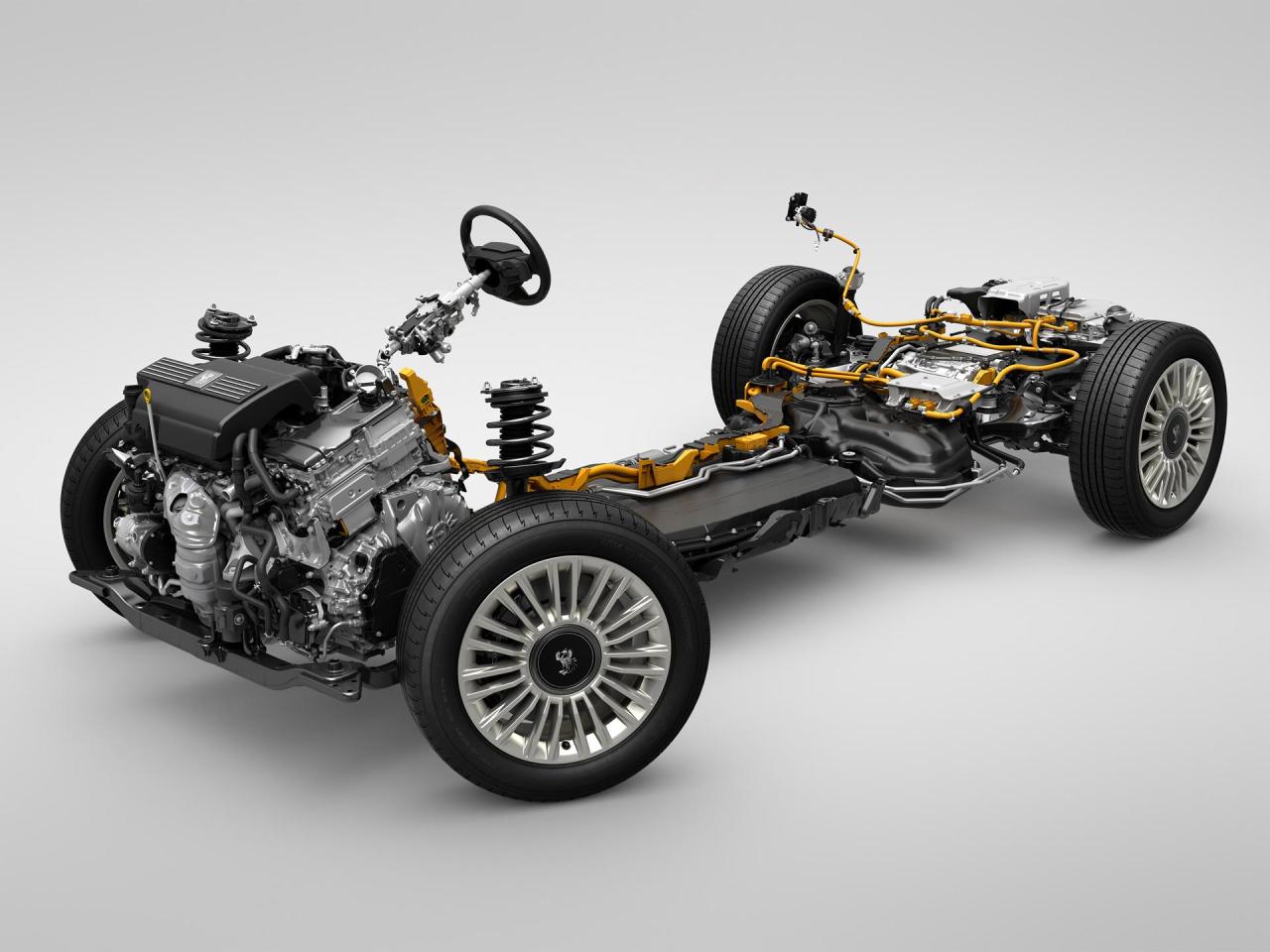
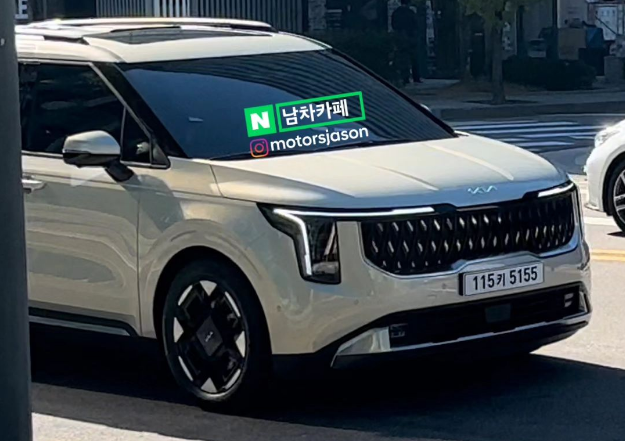
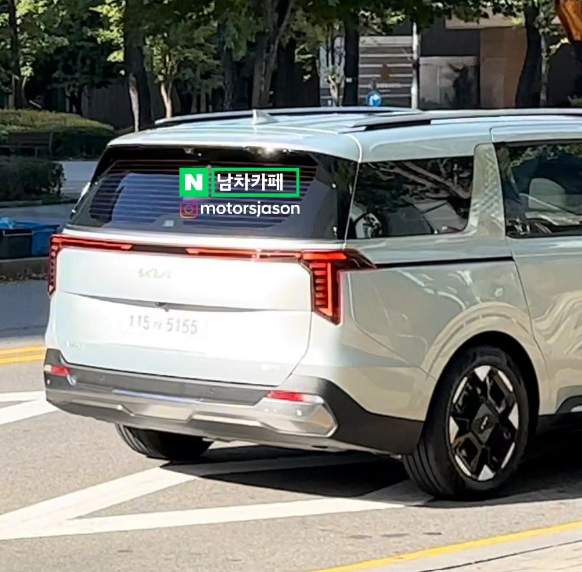

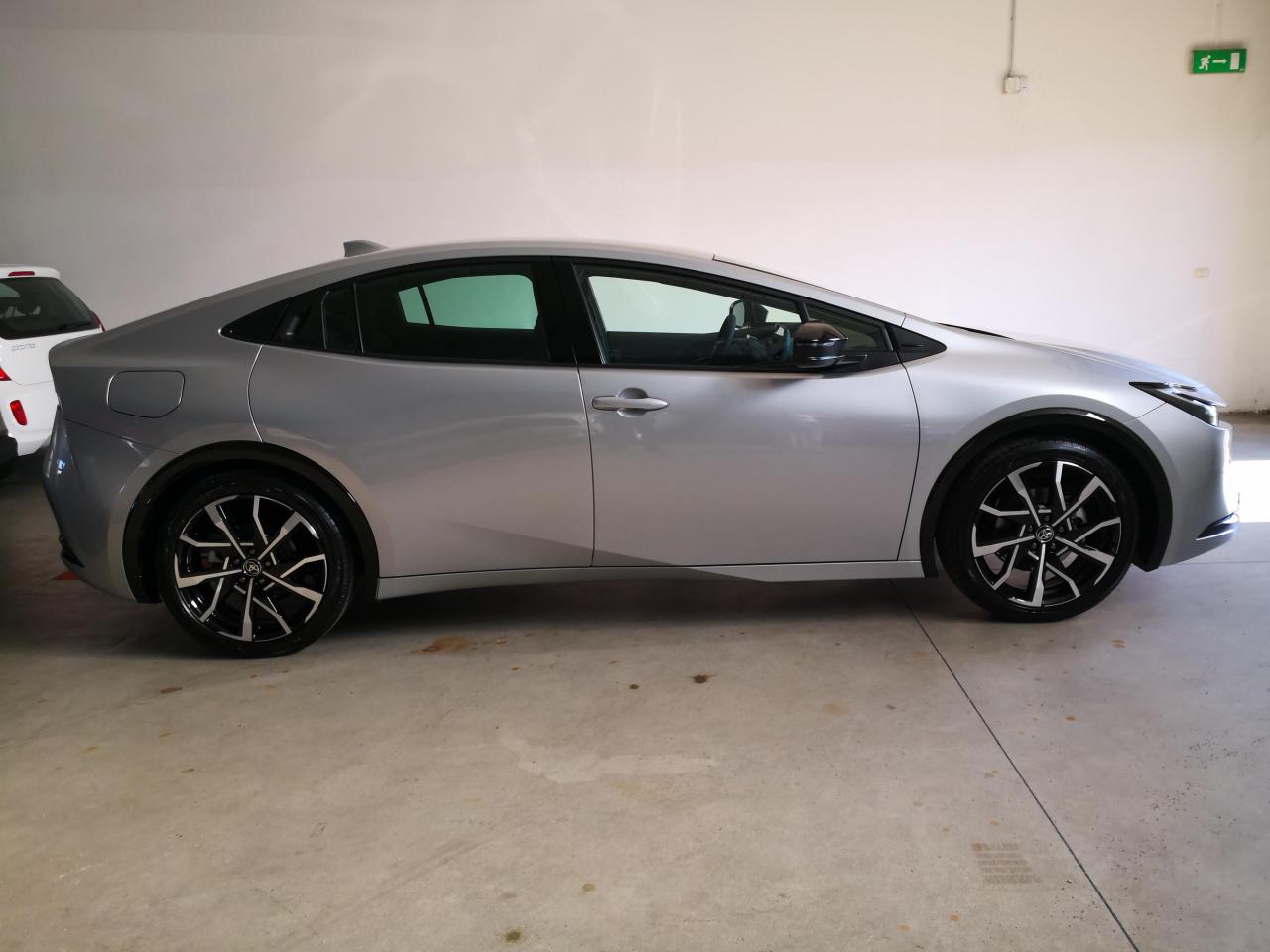
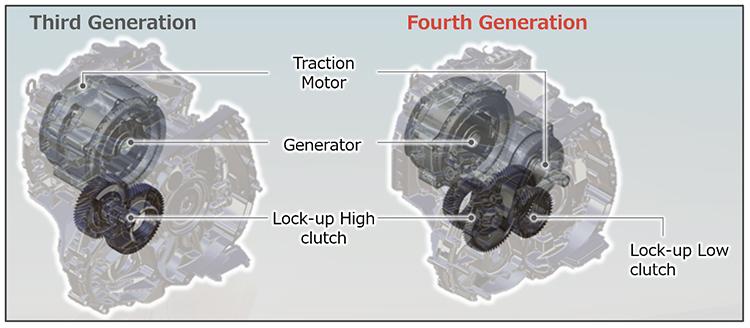


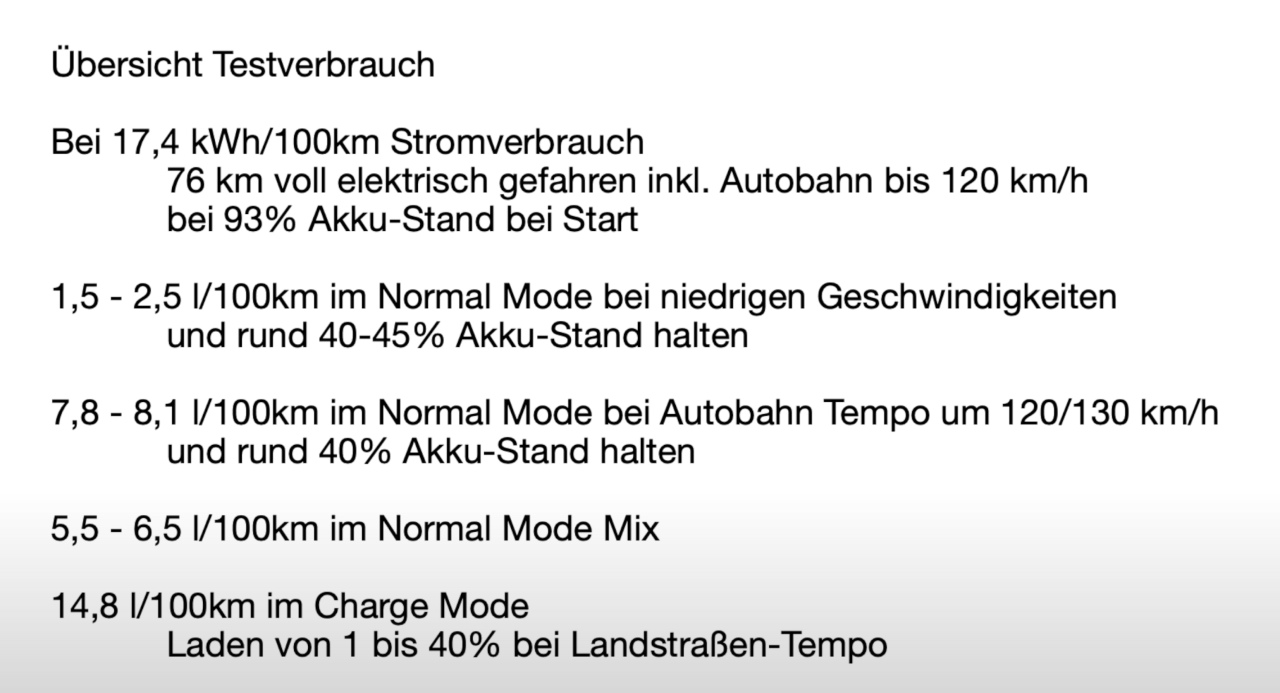
[JPN] Toyota Century SUV 2023
in Presentazioni Nuovi Modelli
Inviato
Infatti, in sostanza hanno relegato la piattaforma RWD a pochissimi modelli: solo sedan di dimensioni importanti e Lexus IS 🤔